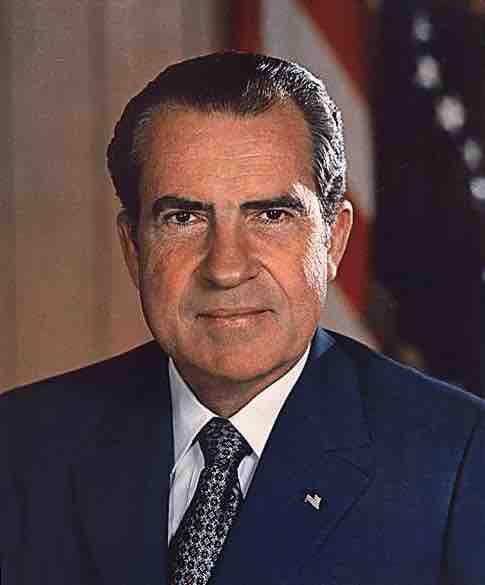Continuing Challenges
Background
Though much progress has been made in establishing racial equality since the time of the Civil Rights Movement, there still exist numerous challenges in this area. Two issues relating to race that remain controversial are the debates surrounding affirmative action and racial profiling.
Affirmative action refers to policies that take factors including race, color, religion, gender, sexual orientation, or national origin into consideration in order to benefit underrepresented groups in areas of employment, education, and business. In 1965, President Lyndon Johnson signed Executive order 11246, affirming the Federal Government's commitment "to promote the full realization of equal employment opportunity through a positive, continuing program in each executive department and agency. "

President Lyndon B. Johnson
Lyndon B. Johnson, who successfully utilized negative political advertising in the famous "Daisy ad" during the 1964 election
After Richard Nixon's inauguration in 1969, he appointed Vice President Agnew to lead a task force, which worked with local leaders—both white and black—to determine how to integrate local schools. Agnew had little interest in the work, and Labor Secretary George Shultz did most of it. Federal aid was available, and a meeting with President Nixon was a possible reward for compliant committees. By September 1970, fewer than ten percent of black children were attending segregated schools. By 1971, however, tensions over desegregation surfaced in Northern cities, with angry protests over the busing of children to schools outside their neighborhood to achieve racial balance. Nixon opposed busing personally but enforced court orders requiring its use.

Richard Nixon, 37th President of the United States
Richard Nixon was elected president in 1968, and resigned in 1974 amidst the Watergate scandal. His presidency included foreign policy achievements, most notably improved relations with China.
In addition to desegregating public schools, Nixon implemented the Philadelphia Plan in 1970—the first significant federal affirmative action program. He also endorsed the Equal Rights Amendment after it passed both houses of Congress in 1972 and went to the states for ratification. Nixon had campaigned as an ERA supporter in 1968. However, feminists criticized him for doing little to help the ERA or their cause after his election even though he appointed more women to administration positions than Lyndon Johnson had.
Racial Profiling
Racial profiling refers to the use of an individual's race or ethnicity by law enforcement personnel as a key factor in deciding whether to engage in enforcement (e.g. make a traffic stop or arrest). The practice is controversial and illegal in many jurisdictions. Racial profiling is challenged at a federal level by both the 4th Amendment of the U.S. Constitution, which guarantees the right to be safe from search and seizure without a warrant (which is to be issued "upon probable cause"); and the 14th Amendment, which requires that all citizens be treated equally under the law. Nonetheless, racial profiling is sometimes practiced in African-American, Hispanic, and Muslim communities within the U.S.
Today's Controversy of Affirmative Action
The controversy surrounding affirmative action's effectiveness is based on the idea of class inequality. Opponents of racial affirmative action argues that the program actually benefits middle and upper class African Americans and Hispanic Americans at the expense of lower-income European Americans and Asian Americans. This argument supports the idea of solely class-based affirmative action. America's poor is disproportionately made up of people of color, so class-based affirmative action would disproportionately help people of color. This would eliminate the need for race-based affirmative action as well as reducing any disproportionate benefits for middle and upper class people of color.
Supporters of affirmative action often cite their goals as
- bridging inequalities in employment and pay;
- increasing access to education;
- enriching state, institutional, and professional leadership with the full spectrum of society;
- redressing apparent past wrongs, harms, or hindrances.
Opponents emphasize that affirmative action is counterproductive. They believe that choosing people based on their social group instead of solely their qualifications has the effect of devaluing their accomplishments; opponents also claim that affirmative action is a form of "reverse discrimination" and may increase racial tension.